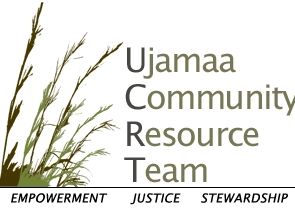
DR Congo
Alliance Nationale d'Appui et de Promotion des Aires et territoires conservés par les Peuples Autochtones et Communautés locales en République Dém...

In Tanzania, the Ujamaa Community Resource Team (UCRT) will work to improve the lives of pastoralist, agro-pastoralist, and hunter-gatherer communities in northern Tanzania by empowering them to sustainably manage and benefit from the natural resources on which their livelihoods depend. UCRT operates in a globally significant ecological system of rangelands extending south and east of the greater Serengeti – Ngorongoro that supports a rich diversity of wildlife and people. The initiative’s goals are to legally secure communal village lands for Indigenous communities in three key biodiverse landscapes through participatory land use planning and land tenure mechanisms, train and coach village councils and natural resource committees responsible for managing rangeland and forest resources for the areas to be sustainably managed by Indigenous governing structures, and develop sustainable natural resource-based income generating activities.
Under this initiative, ICI aims to restore 5,000 hectares of land, improve practices in 465,000 hectares of landscapes/territories (excluding protected areas), improve the management of a total area of 470,000 hectares, and engage 25,000 direct beneficiaries.
Disaggregation of data by Indigenous and local governance type, e.g., Village Council, Ward Grazing Committee, WRLF
Establish participatory land use planning and land tenure mechanisms
Train and coach village councils and natural resource committees responsible for managing rangeland and forest resources for the areas to be sustainably managed by Indigenous governing structures
Develop sustainable natural resource-based income generating activities.
Create village saving and credit groups

Tanzania
940,000
104,201
Global Biodiversity Hotspots and High Biodiversity Wilderness Areas:
Eastern Afromontane
Important Bird Areas:
Lake Natron and Engaruka basin; Yaida Chini
Biosphere Reserves:
Araucarias Biosphere Reserve (Chile)
Reserva de la Biósfera Andino Norpatagónica (Argentina)
Ramsar Sites
Lake Natron
Protected Areas/ Wildlife Management Areas/etc.:
Makame Community Wildlife Management Area

75%
2
The Northern Tanzania rangelands represent a globally significant ecological system that supports a rich diversity of wildlife and people, including the Akie, Datoga, Hadzabe, Iraqw, and Maasai. This savanna landscape provides a vital function for wildlife, while remaining integral to the livelihoods and cultures of indigenous groups. Broadly speaking, the project area extends across critical areas of rangeland connectivity south and east of the greater Serengeti – Ngorongoro and make up the northern and southern most extents of the Tarangire – Manyara ecosystems. This area is most known for its extensive wildlife migrations including over 4,000 elephants and around 20,000 zebra and 20,000 wildebeest. The area maintains several diverse ecological features, including three large soda lakes, afro-montane forests atop Great Rift valley volcanic mountains, short grass plains and seasonal wetlands, dense woodlands and acacia forests, and riverine systems.

Alliance Nationale d'Appui et de Promotion des Aires et territoires conservés par les Peuples Autochtones et Communautés locales en République Dém...

In the Madre de Dios River basin in Peru, an ancestral tropical forest territory home to several Indigenous communities, the Native Federation of Madr...

In Guatemala and Panama, a consortium of Indigenous organizations led by Sotz’il is working to foster the Indigenous use, management, and conservati...